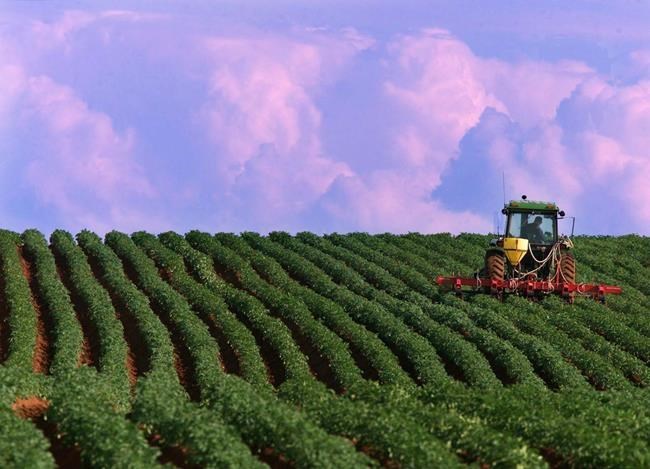
A farmer works a potato field in North Tryon, Prince Edward Island on Thursday, July 13, 2000. Canada's agriculture industry could add $11 billion more to the country's gross domestic product annually by 2030 if the government works to overcome labour and technology challenges that could hamper the future of farming. THE CANADIAN PRESS/Andrew Vaughan
August 27, 2019 - 11:01 AM
Canada's agriculture industry could generate an additional $11 billion for the country's gross domestic product annually by 2030 if the government invests in people and technology, according toa new report.
"The demand for food is growing significantly and it's going to be massive in the 2020s," said John Stackhouse, senior vice president at RBC and contributor to the report.
By 2030, there will be 835 million more people to feed around the world, including four million in Canada, according to the report, which adds that new trade agreements with Europe, Asia and the U.S. should improve Canada's access to these markets.
Yet, the country's agricultural output has stalled in recent years as the use of technology hasn't kept pace with applications in other countries. Canada's global share of exports has decreased to 3.9 per cent from 4.9 per cent in 2000.
"If we don't do anything, we'll be ceding the opportunity to those other countries," said Stackhouse, highlighting the Netherlands, Israel, Australia and the United States as leaders in incorporating technology with agriculture.
In California, for example, farmers struggled to hire enough people to pick produce. The industry focused on automation and now uses technology to thin out weeds, harvest lettuce and inspect strawberries, according to the report.
Canadian farmers are also turning to automation in their fields, including the use of imaging technology to grade pieces of fruit.
But this agricultural revolution requires skilled people to drive the change, according to the report, which envisions the future of agriculture jobs shifting further away from manual labour and more toward managing technologically complex operations, providing technical support and other highly skilled tasks.
"We have a historic opportunity here to take advantage of new technologies that are coming onto the market and are being adapted already in large parts of Canadian agriculture," Stackhouse said.
"We have the opportunity to scale them, but we're not going to scale them if we don't have the people and the skills to take advantage of them."
The report calls on the government to invest more in education, as well as rethink agricultural education and complementary fields such as computer science to better prepare people for the skills the future of the industry will demand.
Governments should also address a pending labour shortage as mass retirements loom with one-quarter of Canadian farmers being 65 or older by 2025, and 600 fewer young people entering the sector each year.
The report predicts 123,000 jobs in agriculture will go unfilled within a decade, and suggests industry groups co-ordinate a campaign to attract and retain young people, women, Indigenous people and new Canadians to careers in agriculture.
These actions would pay off to the tune of an extra $11 billion added annually to GDP from agriculture by 2030 — for a yearly total of $51 billion.
If things progress as is, the report estimates the sector will raise output from $32 billion today to about $40 billion by 2030.
"This is a moment for Canada to seize that opportunity and invest in it."
News from © The Canadian Press, 2019